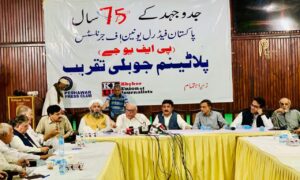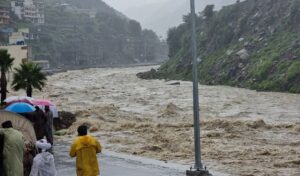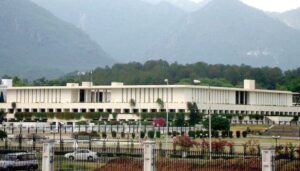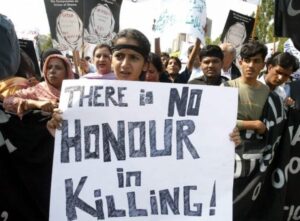JALALABAD, Afghanistan — “This is nothing short of a catastrophe for me. I am in unbearable pain. Can you imagine what it was like to watch my children die before my eyes?” These are the heartbreaking words of Amina, a mother in eastern Afghanistan. Over the years, she has lost six children, none of whom survived beyond the age of three.
Now, her seventh child is fighting for life in a hospital bed in Jalalabad, where the signs of malnutrition are stark.Amina’s seven-month-old daughter, Bibi Hajra, is severely malnourished, her frail body lying limp in a hospital ward. She looks much younger than her age due to the devastating effects of hunger.
“My children are dying because of poverty. I can only give them dry bread and water, which I warm by leaving it in the sun,” Amina says tearfully, as she gazes at her daughter.This isn’t just Amina’s story. It’s the grim reality for millions of families across Afghanistan, a country in crisis, ravaged by war, extreme poverty, and now severe malnutrition.
Bibi Hajra is one of the 3.2 million Afghan children suffering from acute malnutrition, a situation that has plagued the country for decades, but has worsened significantly since the Taliban took control three years ago. In Jalalabad’s hospital, the ward is filled with emaciated children, too weak to cry or even move.
The hospital’s seven beds are occupied by 18 children, each one bearing the cruel signs of hunger and neglect. Here, silence reigns, broken only by the sharp beeps of pulse rate monitors. These children are not suffering from seasonal illnesses; their condition is a symptom of a deeper, more pervasive tragedy that has become commonplace in the region.
Many of these children are not unconscious, but they are so weakened by malnutrition that they are incapable of any movement or sound. Next to Bibi Hajra is three-year-old Homa, her tiny body dressed in a purple outfit. A shawl covers her face, and her frail arm dangles at her side.
Her mother died during childbirth a few months ago, leaving her in the care of her aunt, who sits beside her. Homa’s aunt gestures to a mark on her arm, explaining that she has already lost seven children to the same fate.On the bed adjacent to Homa lies three-year-old Elham.
His body is so severely stunted by malnutrition that he looks much younger than his age. His skin is taut over his bones, his arms, legs, and face shriveled. Three years ago, Elham’s two-year-old sister also died of malnutrition. Nearby, one-year-old Asma, whose strikingly beautiful eyes and long lashes are now dull and cracked due to hunger, lies motionless. Her body is so weak that even her eyelids flutter slowly. An oxygen mask covers her tiny face as she struggles for breath.
Dr. Sikandar, standing by her bedside, gravely remarks, “I don’t think she will survive.” Asma’s body has gone into septic shock, a result of her prolonged starvation.In this room of silent despair, the normal routines of the nurses and mothers continue. They feed and comfort their children, but the moment Dr. Sikandar speaks of Asma’s bleak prognosis, a wave of quiet despair sweeps through the ward. Faces, already marked by exhaustion, grow even more despondent.
Asma’s mother, Naseeba, begins to cry, bending over to kiss her daughter’s head. “It feels like a part of my body is being cut off,” she sobs. “I cannot bear to see her in this pain.”Naseeba has already lost three other children. Her husband is a laborer, and when there is work, they eat. When there isn’t, hunger takes its toll.For the Taliban government, the crisis is a legacy of decades of conflict, compounded by recent natural disasters and climate change.
Hamdullah Fetrat, a deputy spokesman for the Taliban government, acknowledges the severity of the problem. “We inherited this crisis of poverty and malnutrition, worsened by floods and other natural calamities. The international community must increase humanitarian aid and not tie it to political or internal issues,” he said.
In the past three years, this hospital in Jalalabad is just one of many health facilities that have seen the situation deteriorate rapidly. Each visit reveals a deeper crisis, a country where children are dying of hunger at an alarming rate. Afghanistan has long struggled with extreme poverty, exacerbated by four decades of war.
Yet the last three years have seen the crisis reach unprecedented levels. It is difficult for outsiders to grasp how 3.2 million children can suffer from such acute malnutrition, but the stories from this small hospital ward offer a tragic glimpse into the scale of the devastation.In this one room alone, there are children hanging on by the thinnest thread, their bodies weakened by hunger, their futures uncertain.
These children—Elham, Homa, Bibi Hajra, and Asma—are just a few of the many faces of Afghanistan’s silent crisis, a catastrophe unfolding in the shadows of a war-torn nation.













